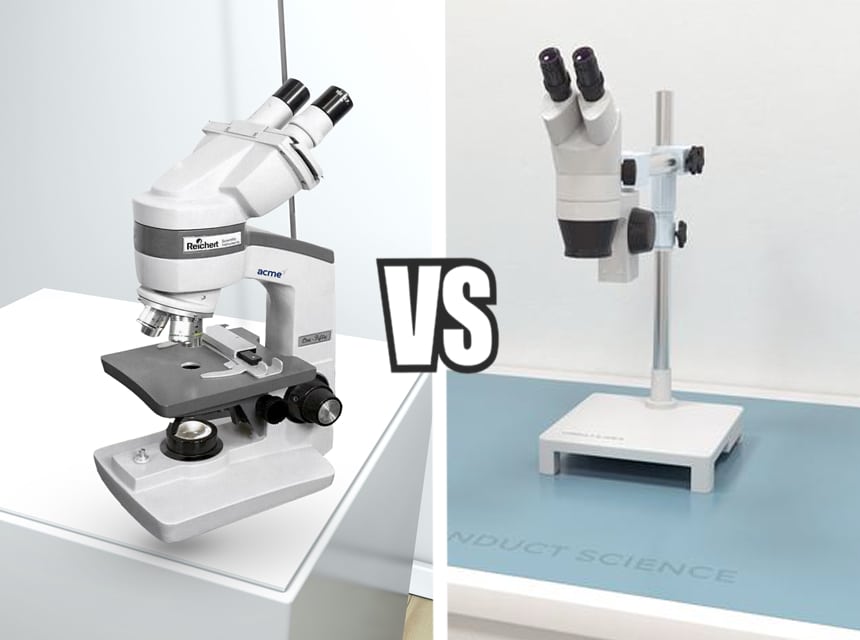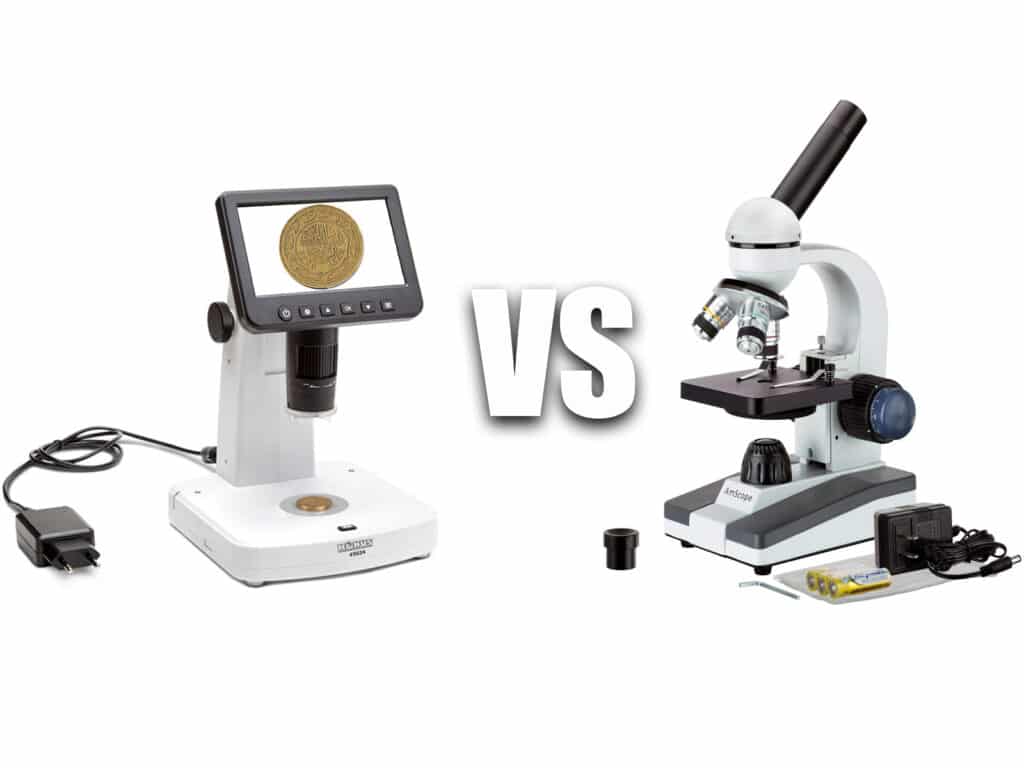

Microscopes allow you to see the world beyond your eyes. They are sophisticated, impressive, and not meant simply for the science classroom. Having a microscope Trusted Source microscope | Types, Parts, History, Diagram, & Facts | Britannica Microscope, instrument that produces enlarged images of small objects, allowing the observer an exceedingly close view of minute structures at a scale convenient for examination and analysis. It may provide a dynamic image (as with optical instruments) or one that is static (as with scanning electron microscopes). www.britannica.com in your home can allow you to explore your surroundings, which is perfect for both the young and old.
While there are many types of microscopes, we’ll be exploring the differences between a simple vs compound microscope. We’ll go over their many features and abilities, and help you decide which one may be the best for you.
Judging by their names, you’ll probably be able to work out that a simple microscope is, well, simple, and a compound microscope is a bit more complex. However, a compound microscope is still relatively easy to manipulate.
Essentially, a compound microscope uses two types of lenses when viewing an object. However, to really understand how a compound microscope works, please watch this video.
When you think of a microscope you may automatically conjure up images of a science lab. However, simple microscopes probably already exist in your home, in the shape of a magnifying glass or a pair of reading glasses.
When you look through a simple microscope, you use only one lens to see an object. Because only one lens is used, you can simply look through it, without having to set up a complicated device.
Here’s a quick overview of the two different microscopes.
| Compound | Simple | |
| Lens | Two | One |
| Use | Professional | Study |
| Light source | Illuminator | Natural |
| Adjustment screws | Two | One |
| Mirror | Plane and concave | Concave |
Simple microscopes are handy to have if you have a young child that wants to explore their backyard Trusted Source Experiments With a Magnifying Glass | Sciencing A magnifying glass is a convex glass lens. It can enable you to undertake numerous simple experiments. A magnifying glass can increase the size of objects when you look through the glass lens and can concentrate light sources. You can use these experiments for fun and as a great educational tool. sciencing.com , or an older person wanting to better see their crossword puzzle clues.
In contrast, compound microscopes are used by science students and professionals. However, there are some easy to use compound microscopes that can be purchased at a decent price for anyone interested in having one, just for fun.
Another option is a digital microscope, which is classified as a compound type. These are great if you need to repair electronics or want a more high-tech way to explore.
You can purchase a simple microscope in the form of a magnifying glass for just a few dollars at many stores. Similarly, you can pick up prescription glasses online or even reading glasses at any local drug store. They are easy to find and do not cost a lot of money.
Those that want a compound microscope, will need to purchase one from a special store or online. Their prices range between $200 and $500, although for what you end up getting, this is still rather affordable.
For example, you can find a technologically advanced, but portable microscope with the Celestron FlipView Handheld LCD Microscope. For those wanting a more traditional-looking microscope, you may want to consider the Meiji Techno MT-14. Although it is almost double the price, it has multiple eyepieces and a powerful magnification capability of 1000x.
In the simplest terms possible, a simple microscope has one lens while a compound microscope has multiple lenses. You can look through the single lens of a simple microscope easily while a compound microscope needs to be set up properly to work.

However, with a compound microscope you can adjust the lenses and move the arm up and down for a more accurate viewing.
While there are different types of simple microscopes, most range in the 2x to 6x magnification power. On the other hand, a compound microscope can offer up to a 1000x magnification power.
There is just so much around us that we aren’t even aware of and a microscope can open that world for us. The truth is we use many types of microscopes in our daily life and there’s a good chance you’re wearing a form of them on your face right now. While a simple microscope doesn’t have the same magnification ability as a compound microscope, it is still useful. And as for a compound microscope, you can use it for scientific work, or if you just want to satisfy your curiosity. We hope you now have a better understanding of the differences between a simple vs compound microscope.





